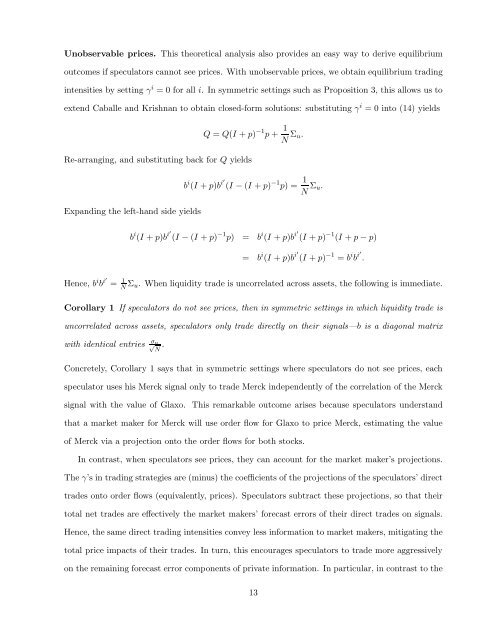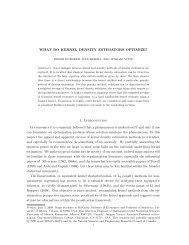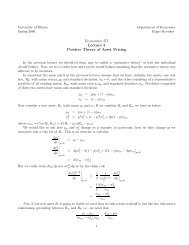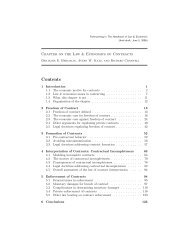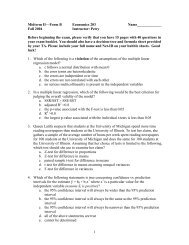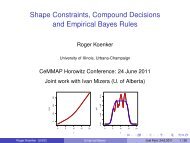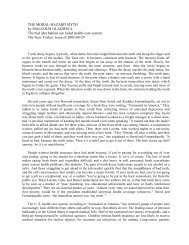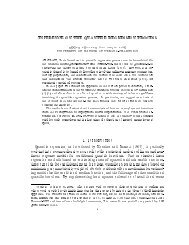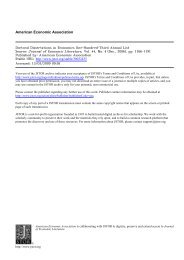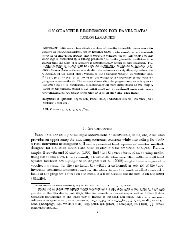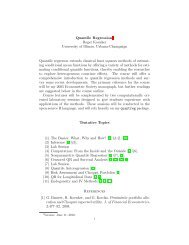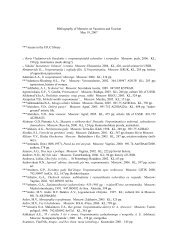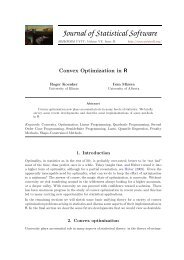Cross-Asset Speculation in Stock Markets∗ - Econometrics at Illinois ...
Cross-Asset Speculation in Stock Markets∗ - Econometrics at Illinois ...
Cross-Asset Speculation in Stock Markets∗ - Econometrics at Illinois ...
You also want an ePaper? Increase the reach of your titles
YUMPU automatically turns print PDFs into web optimized ePapers that Google loves.
Unobservable prices. This theoretical analysis also provides an easy way to derive equilibriumoutcomes if specul<strong>at</strong>ors cannot see prices. With unobservable prices, we obta<strong>in</strong> equilibrium trad<strong>in</strong>g<strong>in</strong>tensities by sett<strong>in</strong>g γ i = 0 for all i. In symmetric sett<strong>in</strong>gs such as Proposition 3, this allows us toextend Caballe and Krishnan to obta<strong>in</strong> closed-form solutions: substitut<strong>in</strong>g γ i = 0 <strong>in</strong>to (14) yieldsQ = Q(I + p) −1 p + 1 N Σ u.Re-arrang<strong>in</strong>g, and substitut<strong>in</strong>g back for Q yieldsb i (I + p)b i′ (I − (I + p) −1 p) = 1 N Σ u.Expand<strong>in</strong>g the left-hand side yieldsb i (I + p)b i′ (I − (I + p) −1 p) = b i (I + p)b i′ (I + p) −1 (I + p − p)= b i (I + p)b i′ (I + p) −1 = b i b i′ .Hence, b i b i′ = 1 N Σ u. When liquidity trade is uncorrel<strong>at</strong>ed across assets, the follow<strong>in</strong>g is immedi<strong>at</strong>e.Corollary 1 If specul<strong>at</strong>ors do not see prices, then <strong>in</strong> symmetric sett<strong>in</strong>gs <strong>in</strong> which liquidity trade isuncorrel<strong>at</strong>ed across assets, specul<strong>at</strong>ors only trade directly on their signals—b is a diagonal m<strong>at</strong>rixwith identical entries σu √N.Concretely, Corollary 1 says th<strong>at</strong> <strong>in</strong> symmetric sett<strong>in</strong>gs where specul<strong>at</strong>ors do not see prices, eachspecul<strong>at</strong>or uses his Merck signal only to trade Merck <strong>in</strong>dependently of the correl<strong>at</strong>ion of the Mercksignal with the value of Glaxo. This remarkable outcome arises because specul<strong>at</strong>ors understandth<strong>at</strong> a market maker for Merck will use order flow for Glaxo to price Merck, estim<strong>at</strong><strong>in</strong>g the valueof Merck via a projection onto the order flows for both stocks.In contrast, when specul<strong>at</strong>ors see prices, they can account for the market maker’s projections.The γ’s <strong>in</strong> trad<strong>in</strong>g str<strong>at</strong>egies are (m<strong>in</strong>us) the coefficients of the projections of the specul<strong>at</strong>ors’ directtrades onto order flows (equivalently, prices). Specul<strong>at</strong>ors subtract these projections, so th<strong>at</strong> theirtotal net trades are effectively the market makers’ forecast errors of their direct trades on signals.Hence, the same direct trad<strong>in</strong>g <strong>in</strong>tensities convey less <strong>in</strong>form<strong>at</strong>ion to market makers, mitig<strong>at</strong><strong>in</strong>g thetotal price impacts of their trades. In turn, this encourages specul<strong>at</strong>ors to trade more aggressivelyon the rema<strong>in</strong><strong>in</strong>g forecast error components of priv<strong>at</strong>e <strong>in</strong>form<strong>at</strong>ion. In particular, <strong>in</strong> contrast to the13


